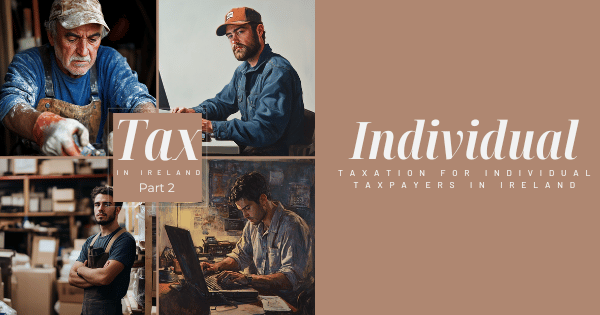Key 2025 Tax Changes and What They Mean For You – Hall Recruitment

- Understanding the 2025 Tax Changes: What They Mean for Your Business and Employees
- Key Income Tax Changes
- Boosted Tax Credits – More Money in Employees’ Pockets
- USC Reduction: A Welcome Relief
- Why This Matters for Employee Retention
- How Businesses Should Prepare
- Get a Pre-Prepared Guide for Your Staff
- Need Accounting Expertise? We Can Help.
Understanding the 2025 Tax Changes: What They Mean for Your Business and Employees
With the dawn of 2025, businesses and employees alike are grappling with significant tax changes that could alter take-home pay, payroll calculations, and compliance obligations. While tax legislation updates often go unnoticed until they hit payslips, staying informed can be a game-changer for businesses that prioritise employee well-being and long-term retention.
So, what’s changed? And how can you ensure your business is ahead of the curve rather than playing catch-up? Let’s break it down.
Key Income Tax Changes
One of the most significant updates is the increase in the standard rate cut-off point for income tax, meaning employees can earn more before hitting the higher 40% tax bracket:
- Single individuals: Increased from €42,000 to €44,000
- Single individuals with the Single Person Child Carer Credit: Increased from €46,000 to €48,000
- Married couples (one income): Increased from €51,000 to €53,000
- Married couples (two incomes): €53,000 + lower earner’s income (capped at €35,000)
For businesses, this means payroll systems must be updated immediately to reflect these changes. Employees will take home slightly more pay due to lower taxation on their earnings, so ensuring transparency and communication about these adjustments will be vital.
Boosted Tax Credits – More Money in Employees’ Pockets
Tax credits have also seen an increase, reducing the tax burden for employees and boosting their disposable income. Key changes include:
- Personal, Employee, and Earned Income Tax Credits: Increased from €1,875 to €2,000
- Rent Tax Credit: Jumped from €750 to €1,000
- Home Carer Tax Credit: Increased from €1,800 to €1,950
- Dependent Relative Tax Credit: Now €305, up from €245
From an employer’s perspective, this is good news—happier employees with increased take-home pay are likely to feel more financially secure. However, it also means that payroll systems must automatically apply the updated tax credits to avoid errors that could lead to confusion or underpayment.
USC Reduction: A Welcome Relief
The Universal Social Charge (USC) rate for incomes between €27,383 and €70,044 has been reduced from 4% to 3%, providing additional savings for those in this income bracket. Businesses will need to ensure that payroll deductions are correctly updated to reflect this, as employees will likely notice any discrepancies when they check their payslips.
Why This Matters for Employee Retention
While these changes ultimately benefit employees, not every business will take the time to inform their staff about them. In today’s job market, where long-term company loyalty is far from guaranteed, this presents an opportunity.
Your employees—especially those who have been with your company for years—are not immune to outside influences. Colleagues and peers discussing tax benefits in the workplace or on social media could spark concern if they believe their employer isn’t keeping them informed or ensuring their entitlements are properly applied. Being proactive about tax updates shows your employees that you care about their financial well-being, which can contribute to higher job satisfaction and long-term retention.
What if your business was the one setting the example, showing employees that their best financial interests are a priority? Wouldn’t it be a positive shift if your team—rather than feeling uncertain—spoke about how their employer had already ensured they benefited from the latest tax changes? This kind of forward-thinking approach can subtly reinforce that your organisation isn’t just another job; it’s a place where careers are built.
How Businesses Should Prepare
To avoid disruption and to foster trust among employees, businesses should:
- Update Payroll Systems – Ensure tax bands, credits, and USC deductions are correctly implemented.
- Communicate Clearly – Send an internal update or hold a briefing to explain what these changes mean for employees.
- Encourage Employees to Check Their Payslips – Mistakes can happen, and employees should verify that their tax credits are correctly applied.
- Support Employees in Availing Tax Benefits – Encourage staff to check their Revenue accounts and claim any applicable credits, such as the Rent Tax Credit.
Get a Pre-Prepared Guide for Your Staff
To make things even easier, we have created a detailed document explaining all the tax legislation changes for 2025. This guide is designed to be clear and accessible for both businesses and employees, ensuring that everyone understands how the changes affect them. Instead of drafting a company memo or leaving it to managers to interpret the legislation themselves, simply forward this document to your staff. It’s ready to send, saving time and ensuring accuracy.
To receive a copy, email info@hallrecruitment.ie today.
Need Accounting Expertise? We Can Help.
Navigating tax updates isn’t just about compliance—it’s about strategic financial management. If your business could benefit from professionals who don’t just keep up with tax law but know how to leverage it to your advantage, we have exceptional candidates with expertise in accounting, payroll, and financial compliance. They’re ready to help ensure your business stays compliant while optimising financial processes.
Interested? Get in touch with us today and let’s discuss how our finance and accounting professionals can support your business.
Discover Top Accounting Talent Here

For more information regarding these changes please visit:
https://www.gov.ie/en/press-release/56f3d-budget-2025-tax-changes-on-1-january-2025/
https://www.irishtaxrebates.ie/tax-tips/budget-2025-ireland
https://www.citizensinformation.ie/en/money-and-tax/budgets/budget-2025



